Enjoy some raptor spam!
 |
| By-catch brown thrasher (a passerine, not a raptor) |
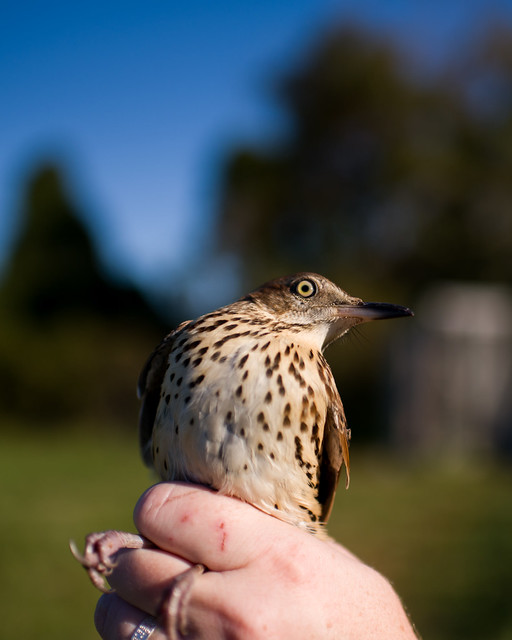 |
| Derpy thrasher. Also observe the bite marks on Mandy's finger from merlins lol |
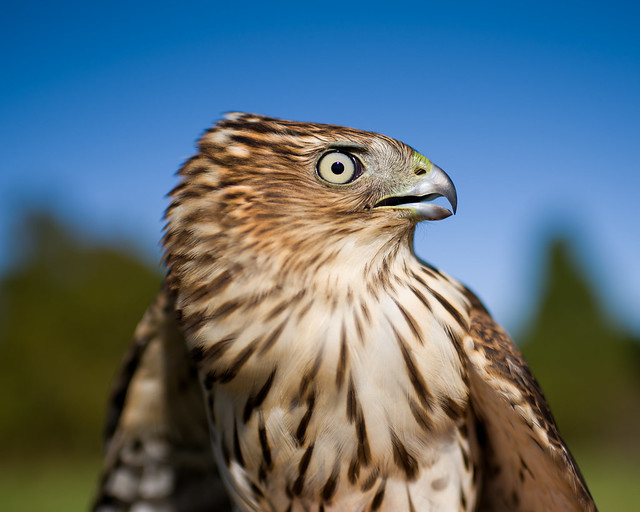 |
| Hatch-year male cooper's hawk |
 |
| HY male coop take off |
 |
| HY male coop looking appalled as Mandy changes her grip to release him |
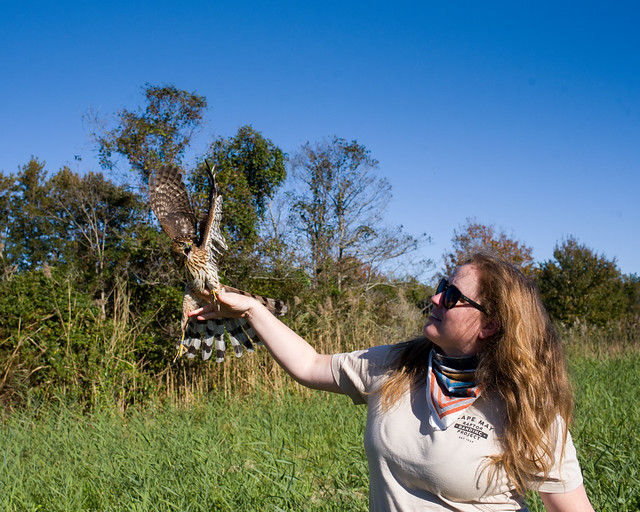 |
| The infamous hawk-looks-shocked during release photo |
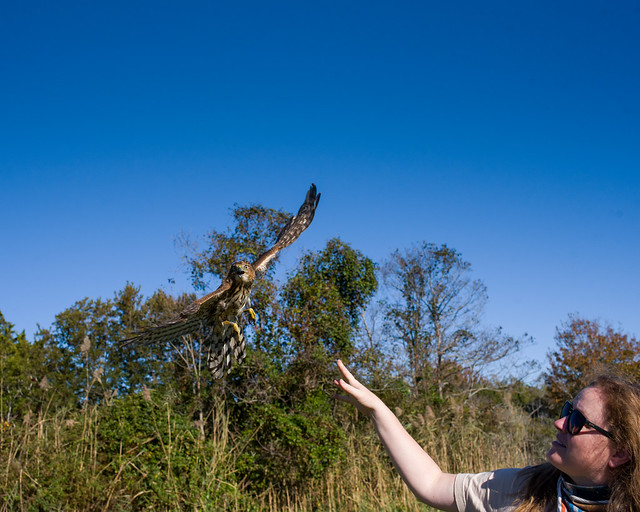 |
| Busy background, but still a neat release shot. I love his little feet |
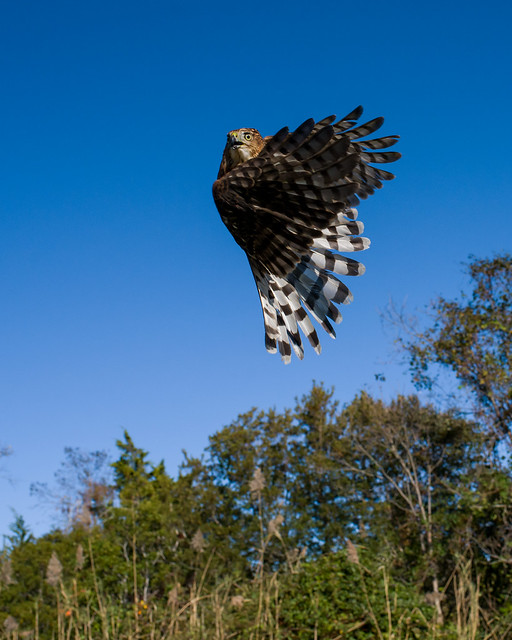 |
| A round of applause for this gent! |
 |
| Hatch year female merlin (small falcon) |
 |
| HY sharp shinned hawk |
 |
| HY sharpie |
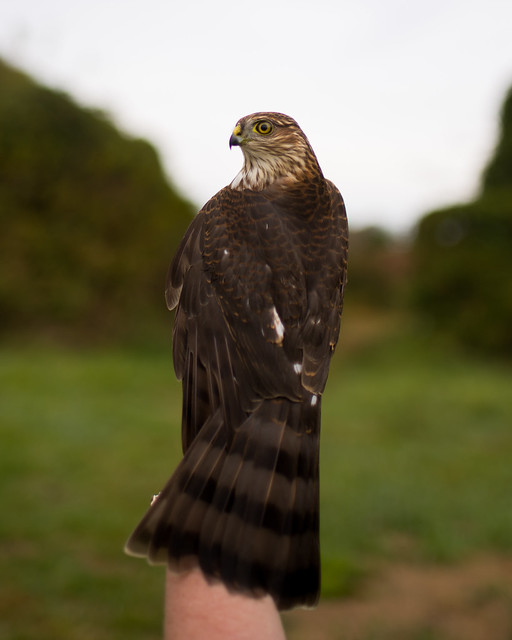 |
| Noble HY sharpie |
 |
| Beautiful rufous tipped feathers; they become grey once adults |
 |
| The infamous sharpie release "trick". A bird has never been on its back, so they simply lie there like this without moving. |
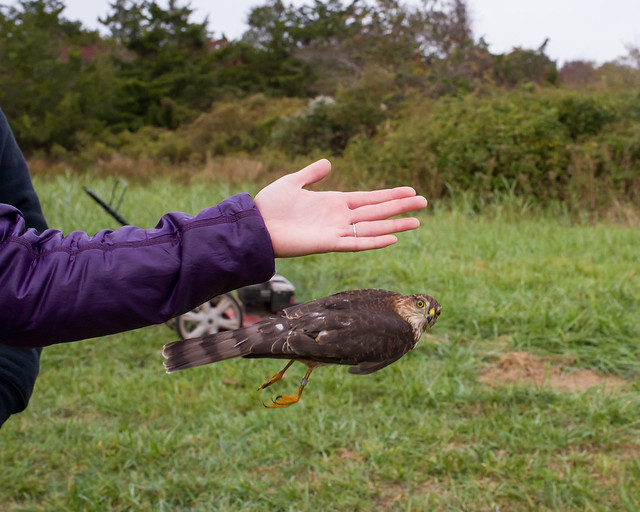 |
| Then you just turn your hand and they take off. I love when I can capture a shot in the milliseconds before they spread their wings! |
 |
| Checking for a crop on a HY sharpie |
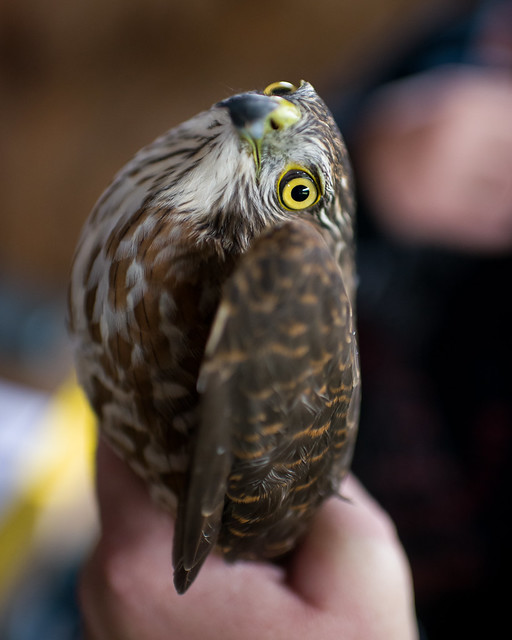 |
| Derp sharpie |
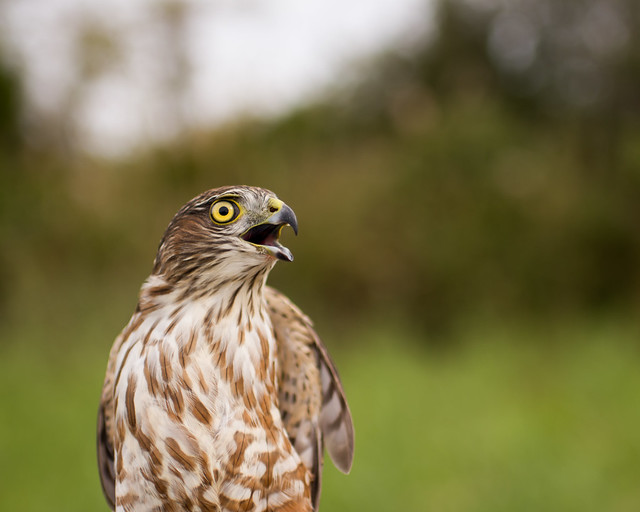 |
| Sharpie trying to be fierce like their big cousins, the northern goshawk |
 |
| Rumpled sharpie |
 |
| Angry derp sharpie |
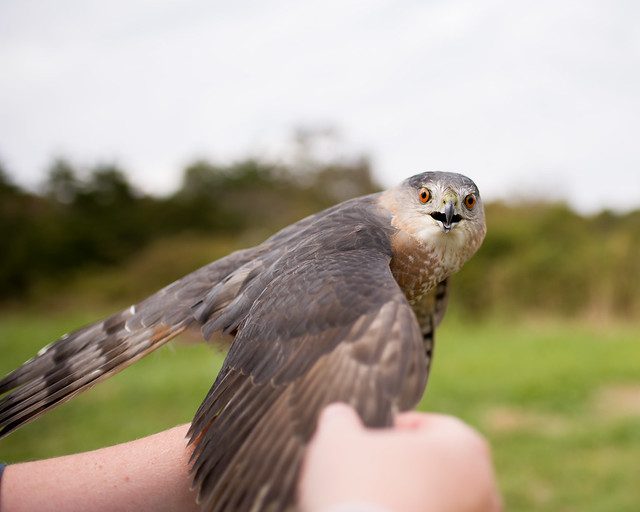 |
| Adult male coopers hawk. Note the gorgeous grey plumage on his back and the darker red chest feathers. The redness of the eyes (red-black vs. red-orange like this one) varies based on their diet. |
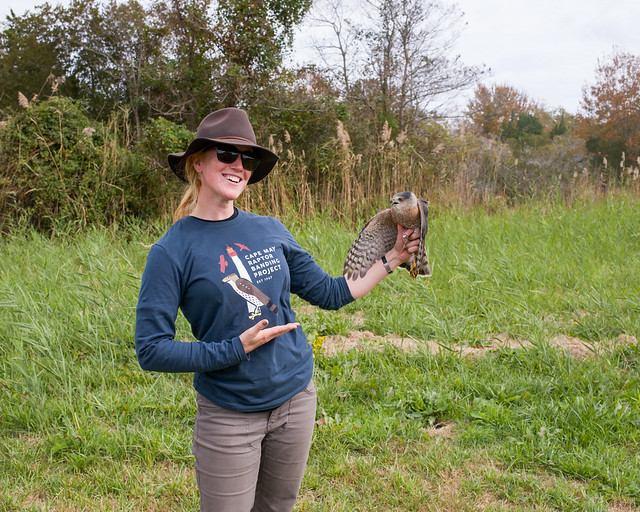 |
| HY coop on our shirts, adult coop in hand |
 |
| The tundrius sub species of the peregrine falcon; note the blonde head HY female |
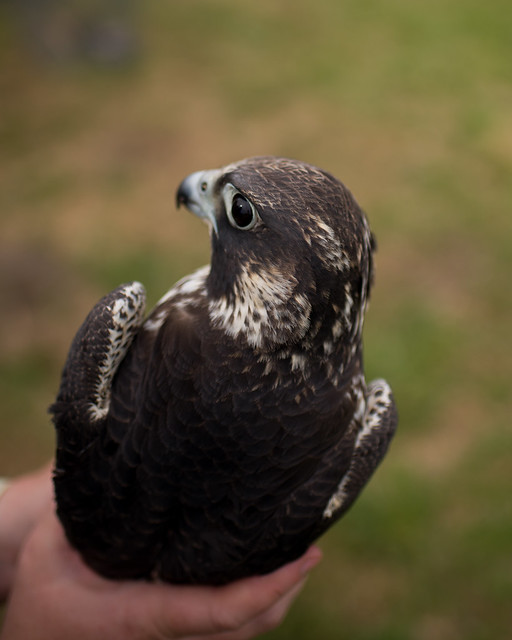 |
| The anatum subspecies of the peregrine; note the black head HY female |
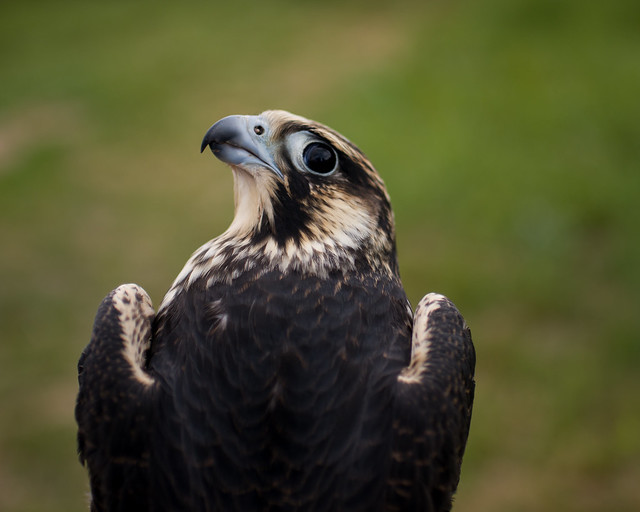 |
| Tundrius |
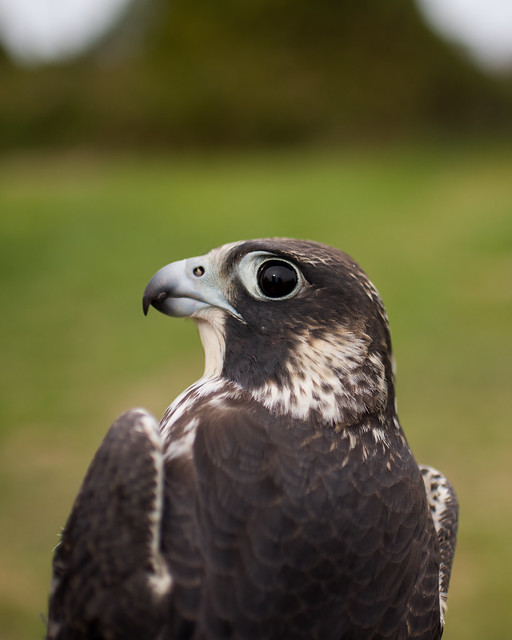 |
| Anatum. Note the bar in the nostril. This helps peregrines to breath when they're at a full speed dive (240 mph) |
 |
| Tundrius |
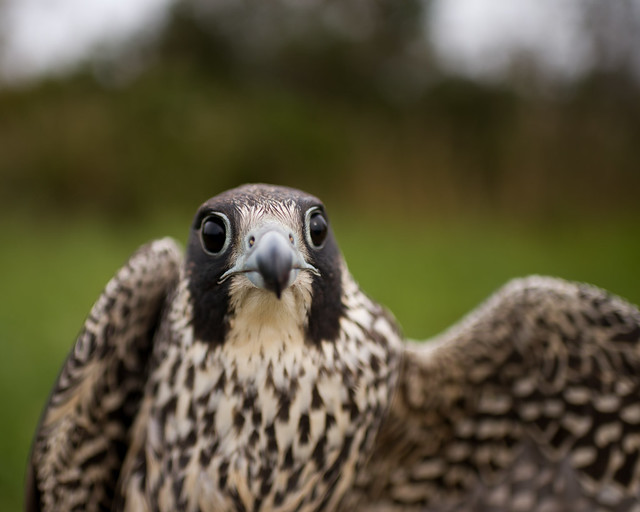 |
| Anatum |
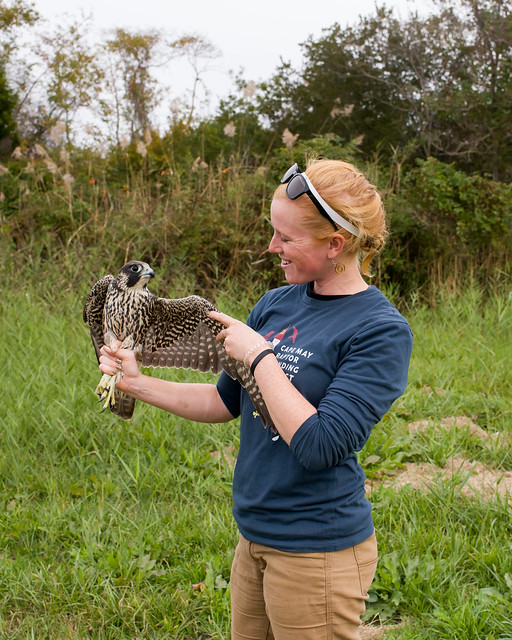 |
| Anatum. So this little girl came into the station in a full stoop (240 mph). I heard her before I saw her! |
 |
| Anatum. Her primary flight feathers are stiff almost like plastic which help her reach such high speeds and stay stable |
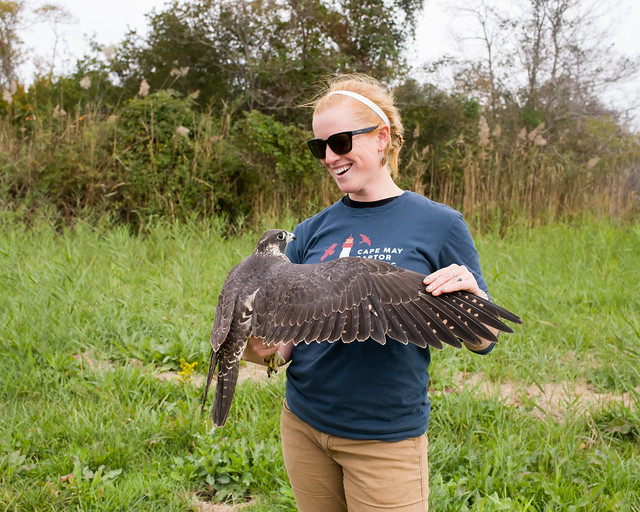 |
| Anatum. She was such a calm peregrine! It is always a treat to have the fastest animal in the world in-hand! |

I love seeing your annual raptor photos. What a treat to be able to participate in such a project!
ReplyDeleteVery cool project and great pictures. I had to chuckle at the brown thrasher. We had one living right off our deck this spring/summer and it was very noisy, especially when we were outside doing stuff...lol
ReplyDeleteomggggggggggg i love these pictures. the little guys face as she palm dumps him is hilarious. and the last one is absolutely gorgeous and interesting!
ReplyDeleteLol, that picture of the sharpie mid-fall before it's spread its wings needs to be a meme!
ReplyDeleteThese are so cool! That looks like such an awesome time!
ReplyDeleteso cool. We have so many hawks here on our property of different sizes they are so cool....so it is so great to see your stuff up close (their expressions are hilarious)
ReplyDeleteGreat photos!!
ReplyDeleteThis is one of my favorite posts. I look forward to it every year!
ReplyDeleteSo cool!
ReplyDeleteWas totally looking forward to this post and your lovely photos! Here on the OBX many raptors pass through. My chickens have fallen prey to Sharp-shinned and Cooper's hawks. The latter killed a chicken (twice his size) with a deadly strike, then found it much too large a meal - so just ate the head and neck. I tried to shoo her away. She gave me a mighty glare and did not budge. Also once got to look a Red Shouldered hawk in the eye and felt that he was absolutely not afraid of human beings. At all. They really put us in our place. Thanks for sharing.
ReplyDeleteCoops are fierce little shits. The females especially (larger than the males) are so much fun to witness when they enter the station and come for a lure. My favorites are the little dino coops who literally RUN into the station like a little velociraptor after hiding in the bushes and scoping out the situation.
DeleteSo amazing, thank you for sharing! This post made my morning <3
ReplyDeleteI look forward to this post every year.
ReplyDeleteJust incredible. Also tho. I feel like there was a missed “derp sherp” caption opportunity here lol
ReplyDeleteOMG. I have failed. You're so right.
Delete